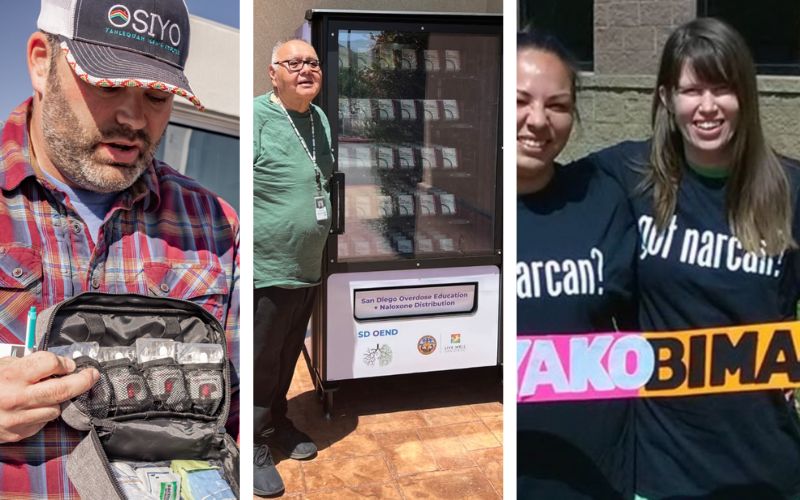
- Details
- By Elyse Wild
After decades of increasing overdose rates spurred by an opioid crisis now characterized by the presence of the highly deadly illicit opioid fentanyl, overdoses declined by roughly 10.6% in the second half of 2023. White, Black, Hispanic, Asian, and Pacific Islanders all saw decreases, ranging from single to double digits. American Indians and Alaska Natives saw an increase in opioid deaths of 2%.
Melissa Walls, PhD (Couchiching First Nation and Bois Forte Band of Ojibwe), co-director of the Johns Hopkins Center for Indigenous Health, told Native News Online that the disparity in overdose decline speaks to systemic inequities that have long plagued public health in Indian Country.
"I'm not surprised," Walls said. "The systems that are put in place to try to address these issues are the same system that created the inequities in the first place, right? They systematically give resources to certain groups over others. Our communities are left behind. So to me, [the numbers] aren't shocking at all."
Opioid deaths have risen steadily since the early 2000s, quadrupling in the two decades between 2002-2022. 2019-2020 saw the steepest increase at 30%, which experts attribute to the fallout of the pandemic. That year, Native Americans' opioid mortality increased by 39% — the second-highest rate of increase behind African Americans.
High overdose rates in Native communities are considered by many to be the intersection of forced removal from tribal lands, boarding school abuse, and broken treaties. The resulting generational trauma and grossly underfunded law enforcement and healthcare puts Indian Country on the front lines of the decades-long crisis.
Federally recognized tribes are eligible to receive payouts from the $1.5 billion Tribal Opioid Settlements, to be distributed over the next 15 years, to reduce overdose deaths. However, for Native communities contending with hundreds of years of limited resources, the money may not be enough. Some tribes are advocating for set-asides of the $21 billion state opioid payouts.
In spite of strapped resources and discouraging data, Native communities have spearheaded innovative solutions to help citizens affected by the opioid crisis. Many tribes have embraced harm reduction — a public health strategy aimed at reducing adverse consequences of drug use like overdose and infectious disease — distributing the opioid overdose reversal drug naloxone through drives, vending machines, and mobile units. Many are integrating traditional practices in addiction care to restore the cultural and community connections that become fractured in active addiction.
Walls says while the data may be discouraging, the positive impact of overdose reduction efforts in Native communities is apparent.
"In spaces where I see Native communities putting their resources together, whether that's human power, existing social services, harm reduction services, building new programs, you can see the impact within those communities," she said. "My message is, please don't stop. Don't lose heart. We see evidence, for example, of Narcan saving lives, and that might be hidden in these inequities and in these large data reports, but there are wins happening at the community level every single day, and we need to fight on all levels, locally.
We also need these places with the resources, these decision-makers, with the power to change the way resources flow, to take note in a big way."
More Stories Like This
Johns Hopkins Collecting Tribal Success Stories from $1.5B Opioid SettlementArizona MMIP Task Force Holds Listening Session for Survivors and Families
‘A good stew is a story’ Blackfeet buffalo rancher shares Three Sisters Buffalo Stew recipe
National Indian Health Board Urges Congress to Extend Enhanced Premium Tax Credits
$1.25 Million Grant Gives Hope to Tolowa Dee-ni' Nation Amid Housing Crisis


